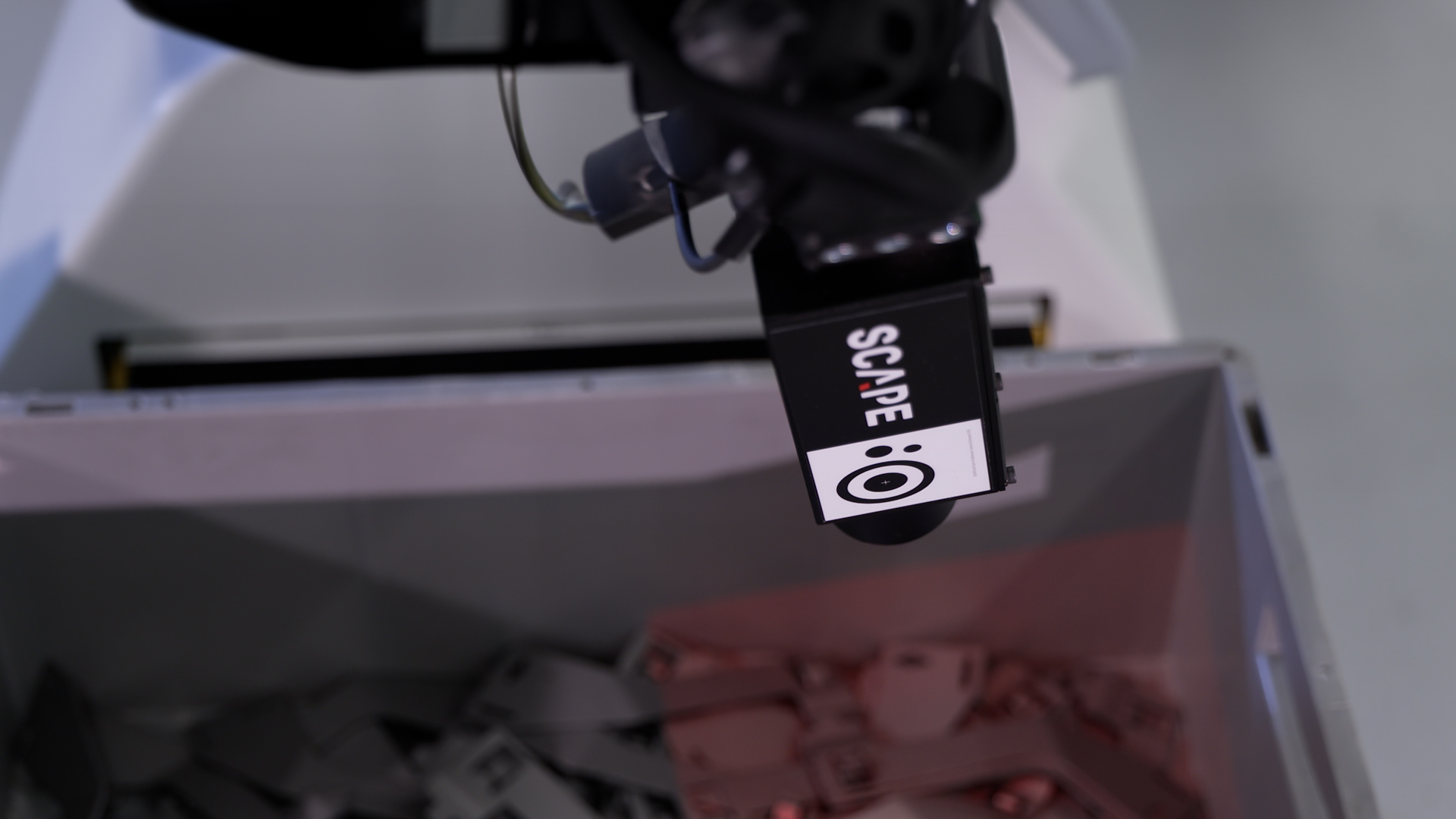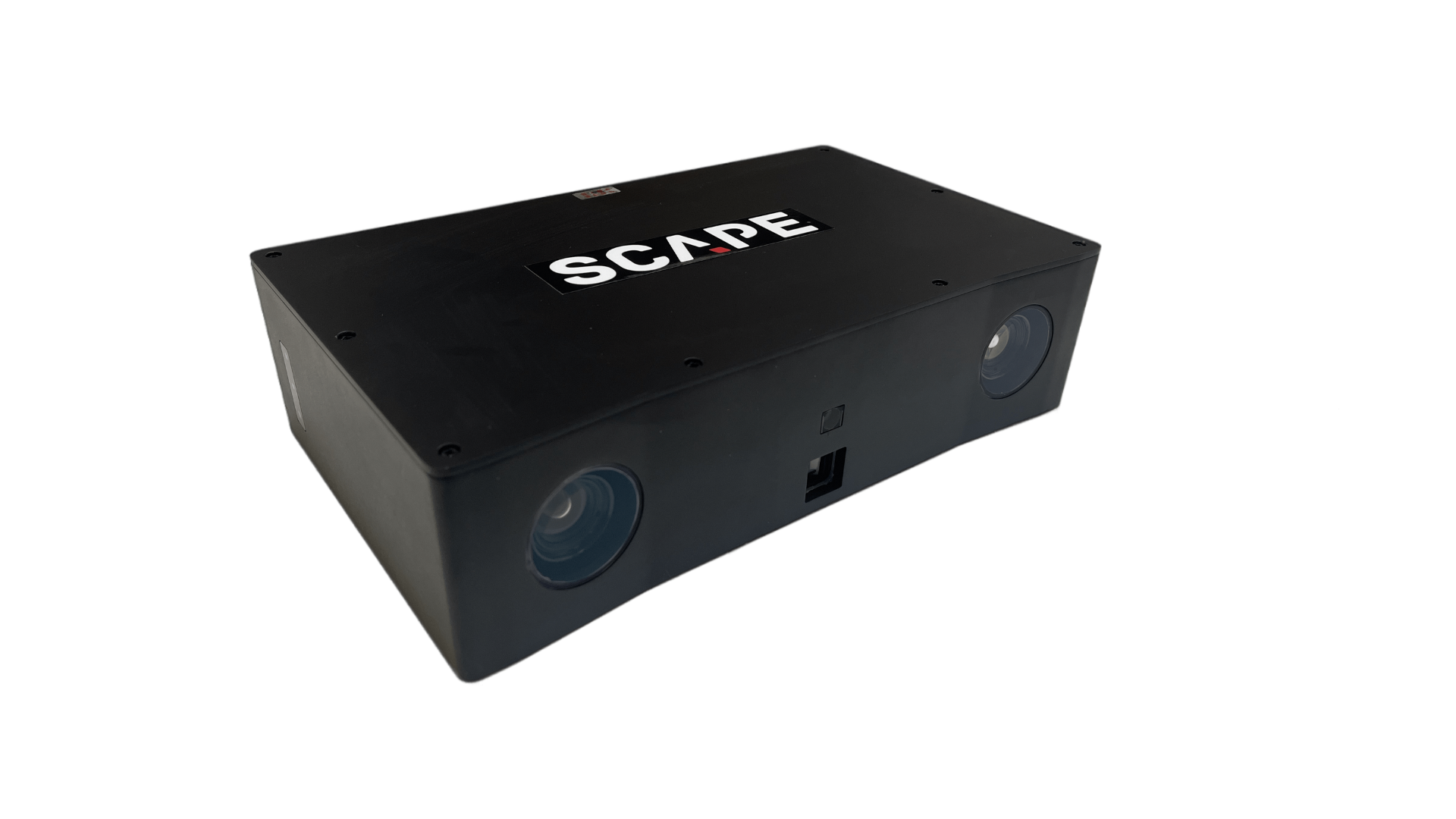6 Benefits of Using a 3D Machine Vision Camera
August 01st, 2023

by Bogdan Tintescu, Marketing Assistant, Scape Technologies
Introduction
In the realm of cutting-edge industrial automation, 3D machine vision cameras have emerged as game-changers, revolutionizing various industries with their remarkable benefits. In this article, we will explore the unparalleled advantages of using 3D machine vision cameras, their working principles, and diverse applications across different sectors.
What is a 3D Machine Vision Camera?
A 3D machine vision camera is an advanced optical device used in industrial automation to capture and process three-dimensional images of objects or scenes. Unlike traditional 2D cameras, 3D machine vision cameras utilize various technologies such as structured light, time-of-flight, or stereoscopic vision to accurately measure depth and shape, providing precision and, therefore optimizing quality control and efficiency in manufacturing processes.
Unveiling the Advantages of 3D Machine Vision Cameras
3D machine vision cameras offer various benefits that significantly enhance the efficiency, precision, and productivity of industrial processes. Let's delve into the exceptional advantages they bring to the table.
1. Empowering Robotics and Automation
3D machine vision cameras play a pivotal role in empowering robotics and automation. By providing real-time 3D perception of the environment, these cameras enable robots to navigate safely, interact with objects, and execute complex tasks autonomously. This synergy between machine vision and robotics transforms industries by reducing manual intervention and minimizing human errors.

2. Unmatched Precision and Accuracy
One of the most compelling reasons to adopt 3D machine vision cameras is their ability to deliver unparalleled precision and accuracy in measurements. Unlike traditional 2D cameras, 3D machine vision cameras capture depth information, allowing for precise object recognition and dimensional analysis. The result is superior quality control, reduced errors, and increased overall product quality.
3. Enhanced Quality Control and Inspection
Quality control and inspection are critical aspects of any manufacturing process. 3D machine vision cameras excel in this domain by identifying defects, imperfections, and deviations with astonishing accuracy. By detecting even the tiniest flaws, manufacturers can ensure that only flawless products reach the market.
4. Increased Efficiency and Productivity
Integrating 3D machine vision cameras with automated systems elevates efficiency and productivity to unprecedented levels. These cameras act as the eyes of robotic systems, enabling them to navigate complex environments, perform intricate tasks, and handle delicate objects with ease. As a result, industries can streamline their operations, optimize resource utilization, and achieve higher output in less time.
5. Optimized Logistics and Warehousing
In logistics and warehousing, space optimization and efficient inventory management are crucial for cost-effective operations. 3D machine vision cameras come to the rescue by accurately measuring the dimensions of packages and determining their volume. This data enables intelligent arrangement and utilization of storage space, leading to streamlined warehousing and improved supply chain management.
6. Driving Innovation in Agriculture
In agriculture, 3D machine vision cameras are driving innovation through precision farming techniques. By continuously monitoring crop health, growth, and yield estimation, farmers can make data-driven decisions to optimize resource usage and increase productivity. Additionally, these cameras enable autonomous agricultural machinery, enhancing farming practices.
The Future of 3D Machine Vision Cameras
As technology continues to evolve, the future of 3D machine vision cameras appears promising. Advancements in artificial intelligence and machine learning are expected to further enhance their capabilities, making them even smarter and more adaptive to diverse industrial applications.
Conclusion
In conclusion, from improving product quality and efficiency to enabling breakthroughs in various industries, 3D machine vision cameras have solidified their position as indispensable tools for modern businesses. By embracing this cutting-edge technology, industries can gain a competitive edge, optimize their operations, and drive innovation.
Make sure you follow our social media channels to stay updated on the latest happenings. (LinkedIn, Facebook, Instagram, Twitter)
